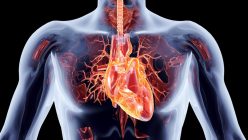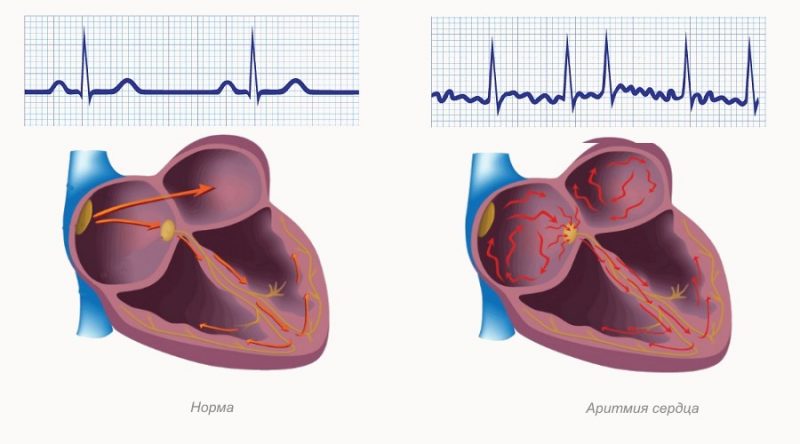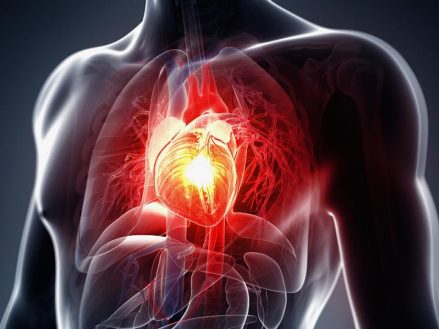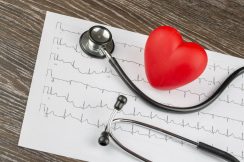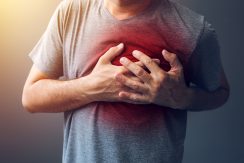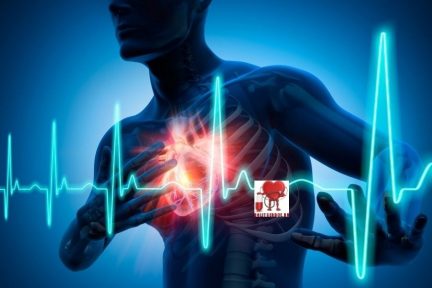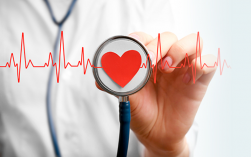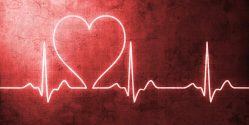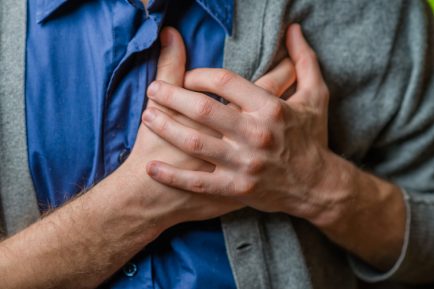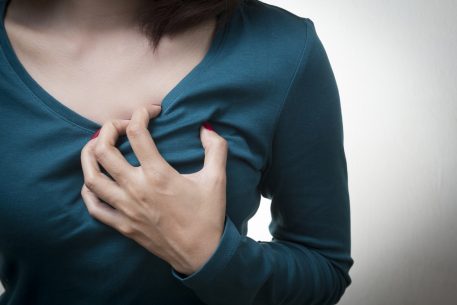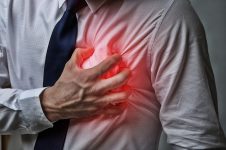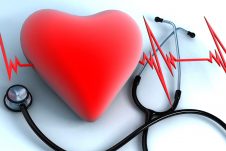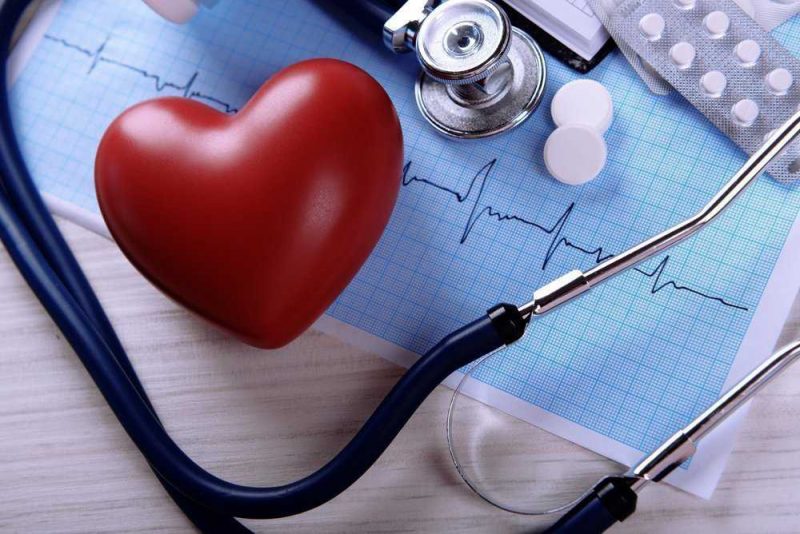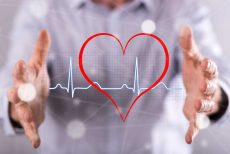Cardiovascular diseases take 2nd place in the list of causes of mortality. Measures in the form of timely treatment of arrhythmia and the identification of the prerequisites for its occurrence will help save the lives of many people.
Material Content:
- 1 What is arrhythmia
- 2 What is the danger?
- 3 Causes and risk groups
- 4 Types of cardiac arrhythmias
- 5 Symptoms in adults and children
- 6 Pathology during pregnancy
- 7 Diagnostics
- 8 Heart rhythm disorder treatment
- 9 Medications
- 10 Folk remedies
- 11 When is an operation necessary?
- 12 Consequences and forecasts
- 13 Preventive measures
What is arrhythmia
Arrhythmia is a pathology of the heart, which is characterized by a violation of the correct rhythm and the frequency of its contractions.
Normally, in a healthy person, the heart contracts at regular intervals with a frequency of 60-90 beats per minute. In childhood, the norm of heart rate is 75-140 beats per minute, in newborns 90-150 beats per minute.
Athletes have a decrease in heart rate due to an increase in the weight of the myocardium (heart muscle). This is considered a variant of the norm.
What is the danger?
Frequent heart rhythm disturbances lead to oxygen starvation of the brain, as there is a violation of blood circulation. Complications of arrhythmias are very serious.
Causes and risk groups
The causes of heart rhythm disturbances can be divided into two groups, inorganic and organic:
- Organic The reasons that are associated with pathologies of the heart muscle. Some diseases disrupt the conduction of the heart.
- Inorganic. Causes not related to heart disease.
- Myocarditis.
- Coronary heart disease.
- Defects of the heart valves.
- Surgery on the heart.
- Hypertension.
- Acute and chronic heart failure.
Inorganic include:
- Stressful situations.
- Pathologies of the central nervous system.
- Dehydration
- Diseases of the endocrine system.
- The use of energy drinks.
- Alcohol intoxication.
- The effect of drugs.
- Strong physical activity.
The risk group for the development of arrhythmia includes elderly people after 60 years of age, smokers, as well as people who are obese.
Types of cardiac arrhythmias
Heart rhythm disorders are divided into the following types:
- Atrial fibrillation. It is characterized by a violation of the rhythm of the heart, a chaotic contraction of the atria. Heart rate can reach 650 beats per minute. With a duration of more than 2 days, blood clots form, which can cause a stroke. Atrial fibrillation in older people is more common.
- Sinus tachycardia. It is characterized by an increase in heart rate to 100-150 strokes, dizziness, general weakness, hypotension, pain in the heart.
- Sinus arrhythmia. It manifests itself in periods of increased or decreased heart rate, shortness of breath, a feeling of pulsation in the chest and temporal region, a feeling of lack of air, a fainting state.
- Sinus bradycardia. It manifests itself as a decrease in heart rate (less than 60 beats). Accompanied by irregular blood pressure from low to high and vice versa. Fainting may occur due to poor circulation.
- Paroxysmal tachycardia. While maintaining a normal rhythm, heart rate reaches 200 beats per minute. There is a noise in the ears, a feeling of "squeezing" the heart, nausea.
- Extrasystole. It is characterized by a sense of anxiety, "sinking heart", a feeling of interruptions in the work of the body, weakness.
Symptoms in adults and children
Young children can not formulate their complaints, therefore, only a cardiologist during examination can determine their arrhythmia. In order not to start the disease, parents should take their children for preventive examinations.
You can suspect heart rhythm disturbances in a child if he has the following symptoms:
- Anxiety or lethargy.
- Pallor of the skin.
- Cyanosis of the nasolabial triangle, nails.
- Restless sleep.
- Shortness of breath with a slight load.
- A small weight gain.
- Decreased or lack of appetite.
Older children may complain of increased fatigue, sweating, heart pain, fainting. Arrhythmia in childhood is well treated and has a favorable prognosis.
In adults, the symptomatology depends on the type of disease. Symptoms of arrhythmias that are characteristic of all types are dizziness, a sense of anxiety, pain in the heart, shortness of breath, inability to perform physical activity, cyanosis of the nasolabial triangle.
Pathology during pregnancy
Heart rhythm disturbance during pregnancy is a very common occurrence. The load on the body increases, especially on the cardiovascular system.
The causes of arrhythmias in pregnant women are: great physical exertion, stress, a decrease in hemoglobin levels, various heart pathologies, endocrine system diseases, bad habits.
 In pregnant women, extrasystole and sinus tachycardia are more common.
In pregnant women, extrasystole and sinus tachycardia are more common.
Extrasystole in pregnant women begins against the background of hormonal changes. Often develops in the third trimester of pregnancy. A woman does not always feel the signs of the disease, if the attacks are repeated often, there is a violation in cardiac activity. They are manifested by a frequent heartbeat, even at rest, drowsiness, panic attacks, hot flashes, chest pain, severe sweating.
Sinus tachycardia occurs due to an increase in the volume of circulating blood. The heart begins to work more actively. It manifests itself with symptoms such as dizziness, palpitations, increased fatigue, and frequent urination. In most cases, the condition is not dangerous and passes on its own.
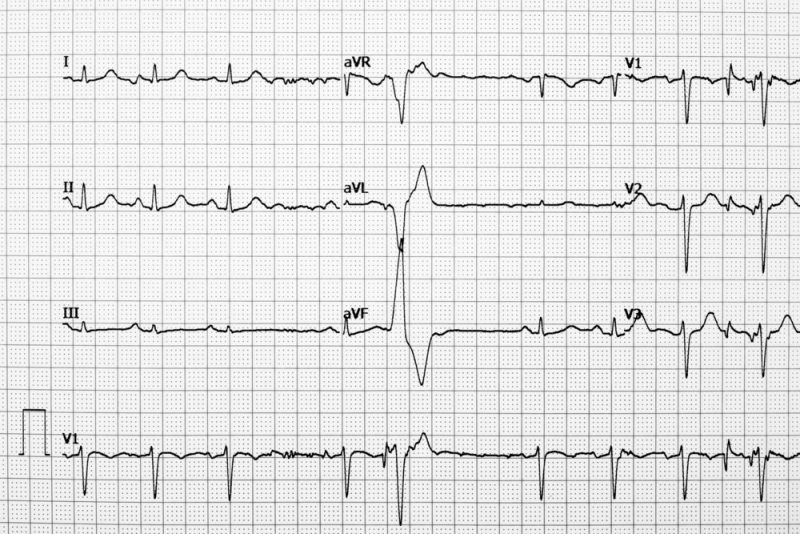
Diagnostics
The examination for suspected arrhythmia includes examination, examination of patient complaints, echocardiography, electrocardiography (ECG), Holter examination, blood tests.
Electrocardiography is the most common method for examining the heart. With arrhythmias on the ECG, irregular contractions, impaired conduction are visible. Tachycardia is characterized by an increase in heart rate, the rhythm remains normal. Bradycardia is characterized by a decrease in heart rate without disturbances in the normal rhythm. With extrasystole on the ECG, chaotic heart contractions are recorded. Atrial fibrillation on a cardiogram is characterized by an irregular ventricular rhythm.
Echocardiography is an examination method that allows you to evaluate the work and structure of the heart. With its help, myocardial thickness, areas of necrosis, contractile function of the ventricles, malformations, and pathology of the valves are determined.
Holter ECG monitoring. The method consists in recording an electrocardiogram for 1-2 days. It makes it possible to identify episodes of rhythm changes during exercise, during sleep. It is a more informative method than a regular ECG.
A blood test provides information on the development of infectious processes in the body, which are often the cause of arrhythmia. For example: myocardial inflammation, pneumonia, anemia.
Heart rhythm disorder treatment
Treatment of arrhythmias begins with the elimination of the causes of the disturbance of the heart rhythm. Very often, after treatment of the underlying disease, the rhythm is restored. In other cases, the patient is prescribed the necessary medications, in accordance with the type of violation.
 First aid for arrhythmia is to provide rest to the victim, it should be laid on a flat surface. If you are indoors, open the window so that there is fresh air. Ask the patient to take a deep breath, then exhale smoothly. You can give the victim a sedative: corvalol, valoserdin, valerian tincture.
First aid for arrhythmia is to provide rest to the victim, it should be laid on a flat surface. If you are indoors, open the window so that there is fresh air. Ask the patient to take a deep breath, then exhale smoothly. You can give the victim a sedative: corvalol, valoserdin, valerian tincture.
Medications
Drug treatment of arrhythmia consists in the appointment of such drugs:
- Beta blockers. Reduce myocardial excitability. These include Anaprilin, Egilok, Concor.
- Calcium channel antagonists. Expand the coronary arteries. These include Amlodipine, Corinfar, Verapamil.
- Potassium channel blockers. Slow the conduction of the heart muscle. Such a drug is Amiodarone.
- Sodium channel blockers. Block the release of potassium and sodium from myocardial cells. They are prescribed for severe rhythm disturbances. This includes drugs Lidocaine, Quinidine.
- Electrolytes. Used to replenish trace elements in the heart. The preparations of this group include Panangin, Asparkam.
Arrhythmia pills should always be taken on time, cancellation of antiarrhythmic drugs is carried out with a gradual decrease in dosage.
Folk remedies
There are alternative ways to treat the disorder:
- Calendula tincture to restore rhythm. 3 tsp calendula flowers pour 2 cups boiling water. Leave to insist 1.5 -2 hours, then strain. Consume 150 g 4 times a day.
- With tachycardia. Hawthorn fruits (100 g), crush and add 400 ml of boiling water. Leave to infuse for 3 hours. Take 4 times a day for 1 tbsp. l
- With arrhythmia caused by stress. 20 g of motherwort herb pour a glass of boiling water. Insist for 30 minutes. Take 1 tbsp. l 3-4 times a day.
When is an operation necessary?
Surgical intervention for arrhythmia is necessary in such cases:
- Medicines do not have an effect.
- The patient underwent valve replacement surgery.
- Heart failure has developed.
- The patient revealed supraventricular and ventricular tachycardia.
- Congenital pathologies of the cardiac conduction system.
Treatment of atrial cardiac arrhythmias is almost always carried out operatively.
Consequences and forecasts
With timely medical and surgical treatment, a quick recovery occurs.
If the seizures are of high frequency and the patient does not seek help, complications may develop.
The most common complication is thromboembolism. The atria contract irregularly, while the ventricles work in an enhanced rhythm. Because of this, blood stagnates in the atria and blood clots form.With the flow of blood, they are transferred to the vessels of the brain, which threatens the development of a stroke. A blood clot entering the pulmonary artery is very dangerous and leads to death.
Atrial fibrillation is the cause of heart failure. It is characterized by a condition when the myocardium cannot function normally and pump blood in the same volume. The heart muscle wears out from frequent contractions, which at any time can lead to cardiac arrest.
All these conditions are dangerous and, without appropriate medical care, lead to irreversible consequences.
Preventive measures
To prevent the development of arrhythmia, you should:
- Monitor blood pressure.
- Monitor your blood glucose.
- Treat concomitant diseases.
- Limit physical and athletic stress.
- Get rid of bad habits.
- Eat properly and keep weight under control.
As well as for preventive purposes, you can take drugs containing magnesium and potassium. These trace elements are necessary for the normal functioning of the heart muscle.
Any violation in the work of such an organ as the heart is very dangerous. You should do an electrocardiogram at least once a year and visit a cardiologist.



